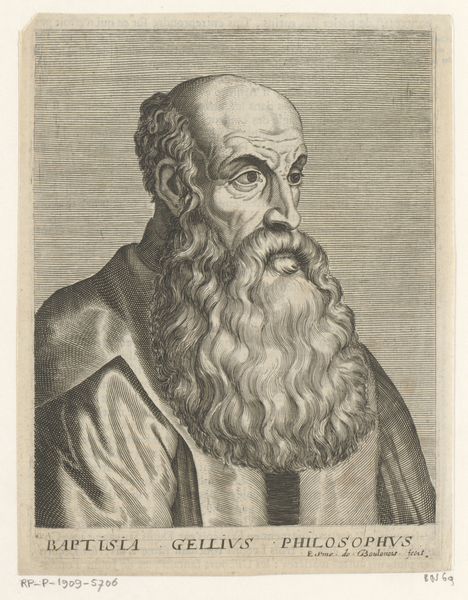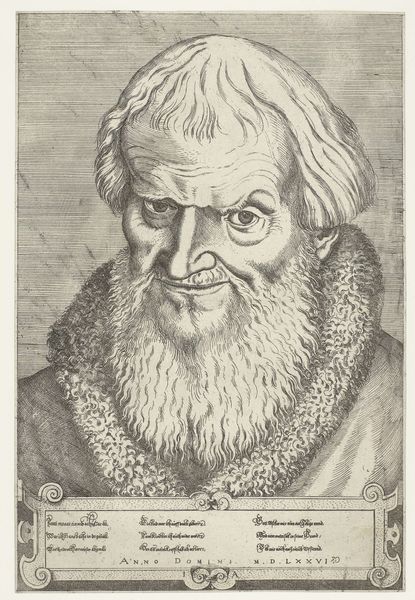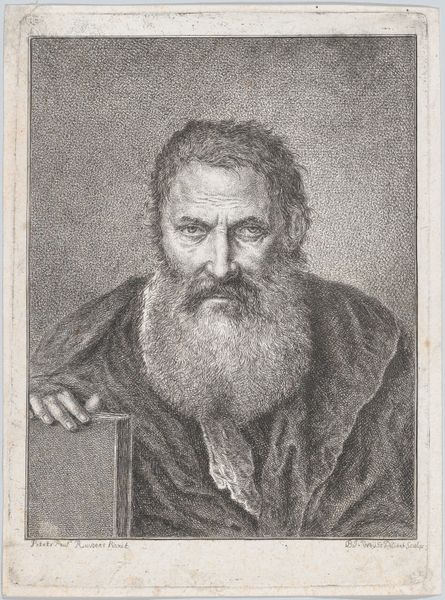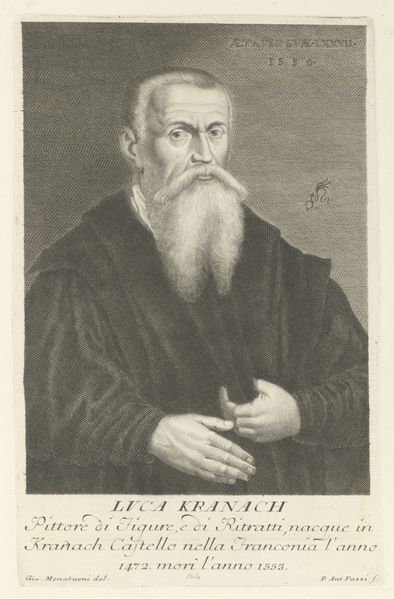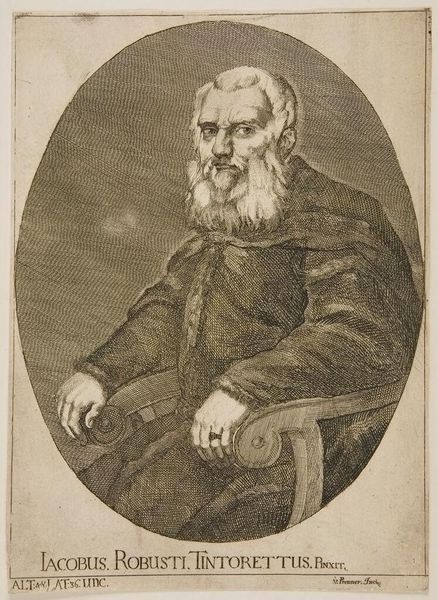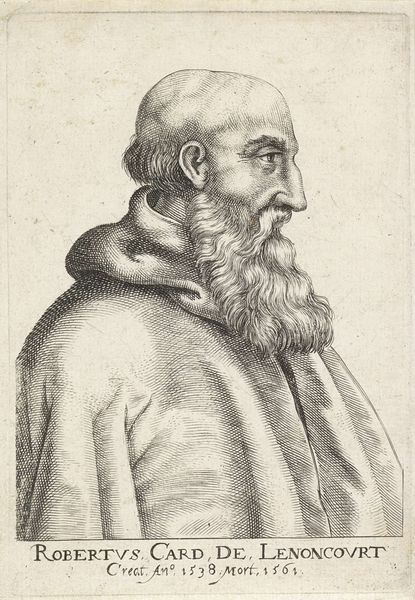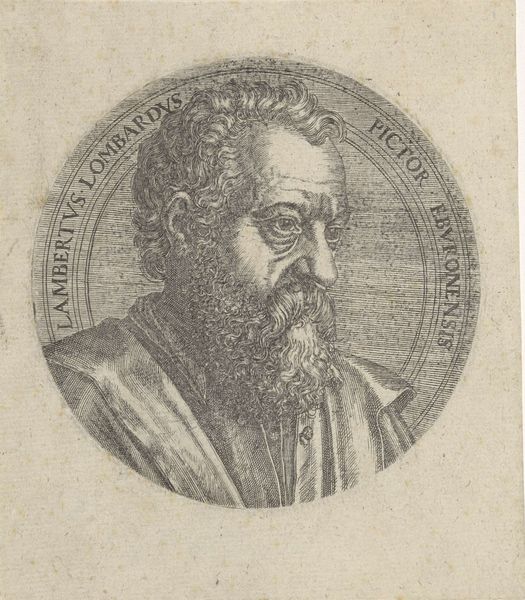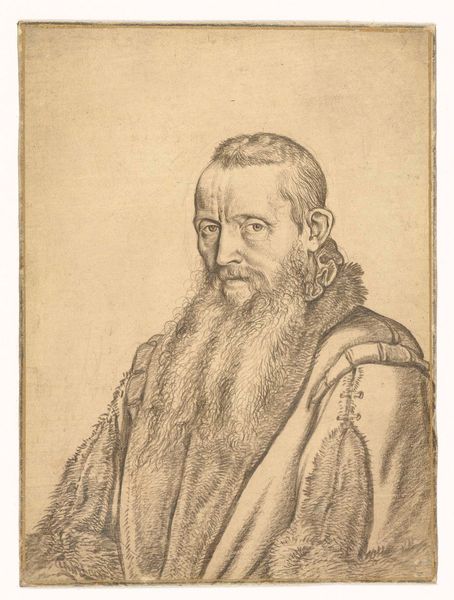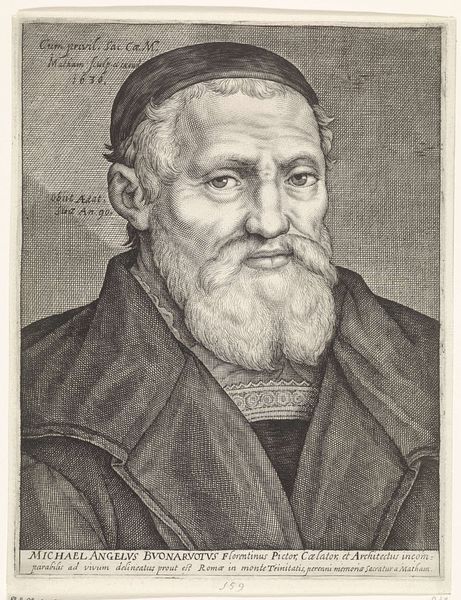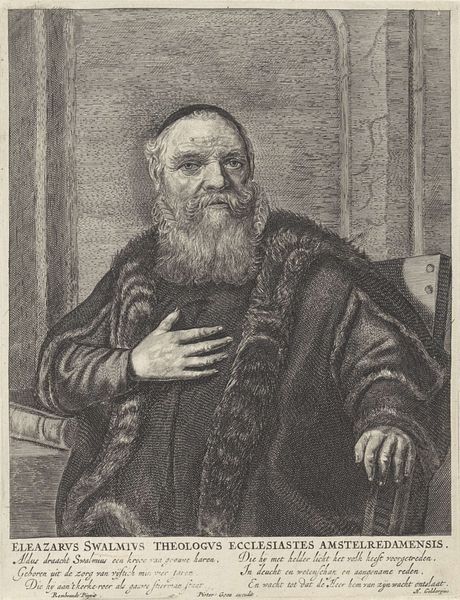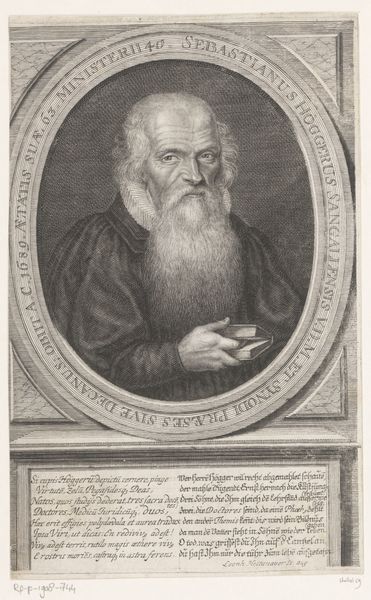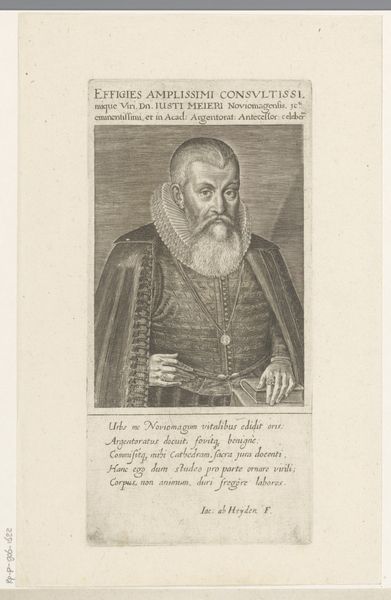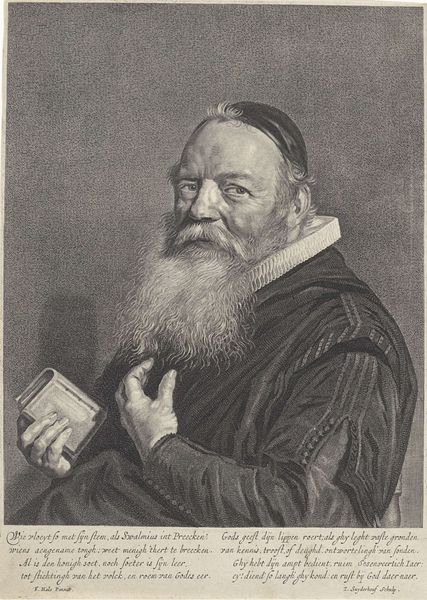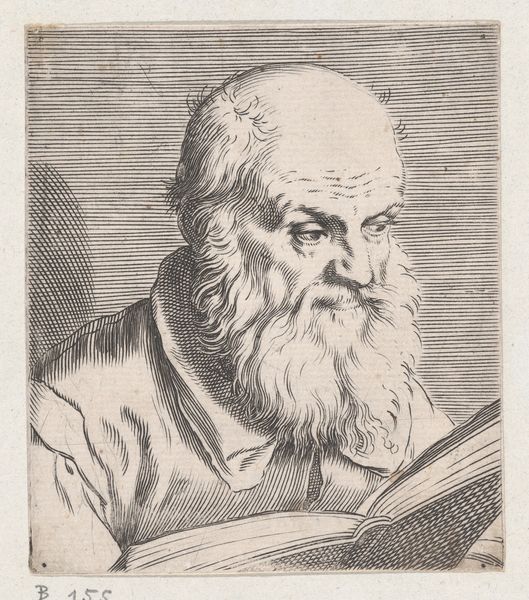
Dimensions: height 170 mm, width 119 mm
Copyright: Rijks Museum: Open Domain
Editor: Here we have Carlo Faucci’s “Portret van Piero Vettori”, an engraving, dating back to sometime between 1739 and 1784. The detail achieved with such fine lines is striking, particularly in the texture of the beard and fur. What elements stand out to you most in this portrait? Curator: Immediately, I’m drawn to the interplay of light and shadow, creating a dramatic chiaroscuro effect. Observe how Faucci utilizes the varying densities of etched lines to model the planes of Vettori’s face. The precise articulation of the brow furrows, for example, constructs a narrative of learnedness through physiognomy. Editor: That's a great point about the varying densities – I hadn’t considered how that shapes the narrative. Is there a system for determining that? Curator: Absolutely. Note the deployment of hatching and cross-hatching: denser concentrations indicate areas in shadow, creating volume and depth. This relates, of course, to our understanding of classical modes of representation—are you finding any disruptions to the balanced composition, in that regard? Editor: The gaze is quite direct, slightly unnerving perhaps, but I find it rather compelling… Curator: Indeed. The unflinching gaze is carefully situated to engage the viewer directly, while the fur-lined coat and tightly pursed lips construct an imposing presence. The textural richness provided by the engraving technique invites prolonged visual contemplation. Editor: That makes sense. It’s fascinating how much meaning can be conveyed through these formal elements alone! Curator: Precisely. Through close attention to form, composition, and technique, we uncover the enduring power of portraiture.
Comments
No comments
Be the first to comment and join the conversation on the ultimate creative platform.
